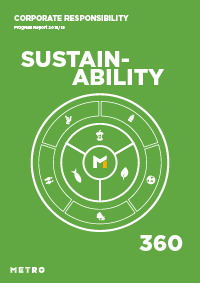
METRO AG provide some insight about how to get started in disclosing against the TCFD recommendations.
MORE INFORMATIONBy: METRO AG

METRO AG provide some insight about how to get started in disclosing against the TCFD recommendations.
MORE INFORMATIONMETRO conducted a gap analysis to check which of the TCFD recommendations are already disclosed in our existing CDP climate answers, which we have been disclosing since 2005. METRO has been conducting carbon accounting for 20 years, with a climate protection target in place since 2011. In 2019 our target for CO2 emissions reductions was officially accepted as a science-based target. In addition to our work on reducing our footprint, we have included non-financial risks in the risk inventory and governance process for many years. We also set an internal carbon price in 2017, initially at €25, which we have increased in 2019 to €50 per to CO2.
Understanding the potential impact of climate change risk is complex, and if we treated every risk in the same way as climate change related risks, it would be a full-time job.
The TCFD recommendations seemed too big to start, but the analysis of the existing risk management based on answers given in the CDP climate questionnaire demonstrated that all requirements, except for the scenario analysis, were already covered in our disclosure. Having a table linking the CDP climate answers to the single TCFD requirements was extremely helpful.
Scenario analysis was the next big topic that seemed too big to start. We found that it is important to select the right scenario and to come to a common understanding of the underlying assumptions. We decided to tackle the scenario analysis step by step:
As a leading global food wholesaler and retailer with activities in 35 countries, METRO is aware of its global climate policy responsibility and has therefore set itself very ambitious and challenging climate protection targets. To show that METRO takes climate protection seriously, we also introduced an internal virtual CO2 abatement price of €25 per tonne of CO2 in our own profitability calculations in 2017. Each investment project is assessed in terms of its CO2 emissions impact and priced accordingly. The aim of this approach is to make it clear to all employees that it is possible to combine the profitability of projects with the greatest possible CO2 savings.
Top tip: There is already more information available than you think. We advise that companies don’t wait, start working on understanding climate change risks in a step by step approach. Climate change risks exist and they will have an impact on your business, which could even lead to a change of the business model!